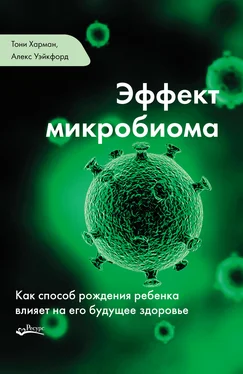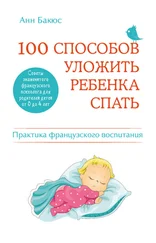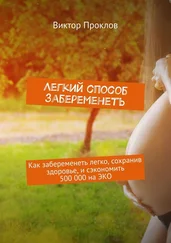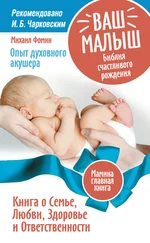3 Doula! The Film (2010, 60 mins), Alto Films Ltd, doulafilm.com
4 Freedom For Birth (2012, 60 mins), Alto Films Ltd freedomforbirth. com. Released on 20 September 2012 with over 1,000 public screenings worldwide. It has been estimated that more than 100,000 people saw the film on one day.
5 Microbirth (2014, 60 mins), Alto Films Ltd, microbirth.com
6 Maurier R. (2013), ‘C-section, formula feeding affect babies’ gut bacteria’, University of Alberta, 11 February, uofa.ualberta.ca/news-and-events/newsarticles/2013/february/csectionformulaaffectbabiesgutbacteria
7 Darmasseelane, K., Hyde, M.J., Santhakumaran, S., Gale, C., Modi, N. (2014), ‘Mode of delivery and offspring body mass index, overweight and obesity in adult life: a systematic review and meta- analysis’, PLoS ONE, Vol. 9 9(2): e87896,journals.plos.org/plosone/ article?id=10.1371/journal.pone.0087896
Глава 1
8 Smith, P.A. (2014), ‘Is your body mostly microbes? Actually, we have no idea’, Boston Globe, 14 September, www.bostonglobe.com/ ideas/2014/09/13/your-body-mostly-microbes-actually-have-idea/ qlcoKot4wfUXecjeVaFKFN/story.html
9 National Institutes of Health (2012), ‘NIH Human Microbiome Project defines normal bacterial makeup of the body’, 13 June, www.nih.gov/ news/health/jun2012/nhgri-13.htm
10 Bowers, R., Sullivan, A., Costello, E., Collett, J., Knight, R., and Fierer, N. (2011), ‘Sources of bacteria in outdoor air across cities in the midwestern United States’, Applied and Environmental Microbiology, Vol. 77(18), 6350–6
11 Lewis, D.A., Brown, R., Williams, J., White, P., Jackobson, S.K., Marchesi,J.R., and Drake, M.J. (2013), ‘The human urinary microbiome; bacterial DNA in voided urine of asymptomatic adults’, Frontiers in Cellular and Infection Microbiology. Vol. 3(41), www.ncbi.nlm.nih.gov/pmc/articles/ PMC3744036/
12 Wheatley, M.B., Rud, E., Warren, R.L., Holt, R.A., Surette, M.G., and Power, C. (2013), ‘Brain microbial populations in HIV/AIDS: a-proteobacteria predominate independent of host immune status’, PLOS One 8(1): e54673, journals.plos.org/plosone/article?id=10.1371/journal. pone.0054673
13 Kong, F., and Singh, R.P. (2008), ‘Disintegration of solid foods in human stomach’, Journal of Food Science, Vol. 73(5): R67–80, www.ncbi.nlm.nih. gov/pubmed/18577009
14 Rao, J.N., and Wang, J.Y. (2010), ‘Intestinal architecture and development’, in Regulation of Gastrointestinal Mucosal Growth (Morgan & Claypool Life Sciences, San Rafael, California), www.ncbi.nlm.nih.gov/books/ NBK54098
15 Stephen, A.M., and Cummings, J.H. (1980), ‘The microbial contribution to human faecal mass’, Journal of Medical Microbiology, Vol. 13(1), pp.45–56, www.ncbi.nlm.nih.gov/pubmed/7359576
16 FARE – Food Allergy Research and Education, ‘Food allergy basics: facts and statistics’, www.foodallergy.org/facts
17 In the study, type-I diabetes had risen from 1.5 cases per 1,000 children in 2002 to 2.3 cases per 1,000 in 2013. Diabetes Care, 17 December, 2015 https://web.archive.org/web/20160104205615/https://www.nlm.nih.gov/ medlineplus/news/fullstory_156281.html
18 Celiac Disease Foundation, ‘What is celiac disease?’, celiac.org/celiac-disease/what-is-celiac-disease
19 National Institute of Diabetes and Digestive and Kidney Diseases, Overweight and Obesity Statistics www.niddk.nih.gov/health-information/health-statistics/Pages/overweight-obesity-statistics.aspx
20 NHS Choices (2016), ‘Heartburn and gastro-oesophageal reflux disease (GORD)’, www.nhs.uk/conditions/Gastroesophageal-reflux-disease/ Pages/Introduction.aspx
21 Clemente, J.C., Pehrsson, E.C., Blaser, M.J., Sandhu, K., Gao, Z., Wang, B., Magris, M., et al. (2015), ‘The microbiome of uncontacted Amerindians’, Science Advances 1(3) pii: e1500183, advances.sciencemag.org/ content/1/3/e1500183
22 Bailey, L.C, Forrest, C.B., Zhang, P., Richards, T.M., Livshits, A., DeRusso, PA. Association of antibiotics in infancy with early childhood obesity. JAMA Pediatrics, 168 (11), pp.1063-9, www.ncbi.nlm.nih.gov/ pubmed/25265089
23 Van Boeckel, T.P., Brower, C, Gilbert, M., Grenfell, B.T., Levin, S.A., Robinson, T.P., et al. (2015), ‘Global trends in antimicrobial use in food animals’. Proceedings of the National Academy of Sciences of the USA, 112(18), pp.5649–54, www.pnas.org/content/112/18/5649.abstract
24 Bazian (2015), ‘Antibiotic use in farm animals “threatens human health”’, NHS Choices, www.nhs.uk/news/2015/12December/Pages/Antibiotic-use- in-farm-animals-threatens-human-health.aspx
25 Soil Association, ‘Overuse of antiobiotics in farming’, www.soilassociation. org/antibiotics/overuseofantibioticsinfarming
26 Microbiology Online, ‘Antiobiotics’, www.microbiologyonline.org.uk/ about-microbiology/microbes-and-the-human-body/antibiotics
27 Some people believe that penicillin was actually first discovered by a physician called John Tyndall in 1875; http://itech.dickinson.edu/chemistry/?p=107
28 American Chemical Society, International Historic Chemical Landmarks. ‘Discovery and development of penicillin’, www.acs.org/content/acs/en/education/whatischemistry/landmarks/flemingpenicillin.html
29 ‘The Nobel Prize in Physiology or Medicine 1945, The Official Web Site of the Nobel Prize, www.nobelprize.org/nobel_prizes/medicine/ laureates/1945
30 Turner, M. (2014), ‘Antibiotic resistance: 6 diseases that may come back to haunt us’, The Guardian, 9 May, www.theguardian.com/commentisfree/2014/may/09/6-diseases-becoming-resistant-to-antibiotics
31 World Health Organization (2014), ‘Antimicrobial resistance global report on surveillance 2014’, www.who.int/drugresistance/documents/surveillancereport/en/
32 NHS Choices (2016), Vaginal thrush’, www.nhs.uk/Conditions/Thrush/Pages/Causes.aspx
Глава 2
33 Park, A. (2015), ‘Babies in the womb aren’t so sterile after all’, TIME, 28 December, time.com/4159249/baby-microbiome-womb
34 Stout, M.J., Conlon, B., Landeau, M., Lee, I., Bower, C., Qiuhong, A., et al. (2013), ‘Identification of intracellular bacteria in the basal plate of the human placenta in term and preterm gestations’, American Journal of Obstetrics and Gynaecology, Vol. 208(3); 226, e221–e227, www.ncbi.nlm. nih.gov/pmc/articles/PMC3740162
35 Aagaard, K., Ma, J., Antony, K.M., Ganu, R., Petrosino, J., and Versalovic, J. (2014), ‘The placenta harbors a unique microbiome’. Science Translational Medicine, Vol. 6(237): 237ra65, www.ncbi.nlm.nih.gov/ pubmed/24848255
36 Cao, B., Stout, M.J., Lee, I., and Mysorekar, I.U. (2014), ‘Placental microbiome and its role in preterm birth’, NeoReviews, Vol. 15(12), e537–e545, www.ncbi.nlm.nih.gov/pmc/articles/PMC4307601
37 Mueller, N.T., Bakacs, E., Combellick, J., Grigoryan, Z., and Dominguez-Bello, M.G. (2015), ‘The infant microbiome development: mom matters’, Trends in Molecular Medicine, Vol. 21(2), pp.109–117, www.ncbi.nlm.nih.gov/pmc/articles/PMC4464665
38 Koren, O., Goodrich, J.K., Cullender, T.C., Spor, A., Laitinen, K., BaЁckhed, H.K., et al. (2012), ‘Host remodeling of the gut microbiome and metabolic changes during pregnancy’, Cell, 150, pp.470–480, www.ncbi.nlm.nih.gov/ pubmed/22863002
39 Blaser, M.J., Missing Microbes: How the overuse of antibiotics is fueling our modern plagues (Henry Holt and Co., an imprint of Macmillan Publishers, New York, 2014.), p.94.
40 Dietert, R. & Dietert, J. (2012), ‘The completed self: an immunological view of the human-microbiome superorganism and risk of chronic diseases’ Entropy, Vol. 14, pp.2036–2065, www.mdpi.com/1099-4300/14/11/2036
41 Barker, D.J.P., and Godfrey, K.M (2001), ‘Fetal programming and adult health’, Public Health Nutrition, Vol. 4 (2b), pp.611–624, dx.doi.org/10.1079/PHN2001145, published online 27 September 2007
Читать дальше
Конец ознакомительного отрывка
Купить книгу




![Аре Бреан - Музыка и мозг [Как музыка влияет на эмоции, здоровье и интеллект]](/books/398841/are-brean-muzyka-i-mozg-kak-muzyka-vliyaet-na-emoc-thumb.webp)







